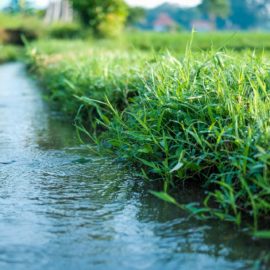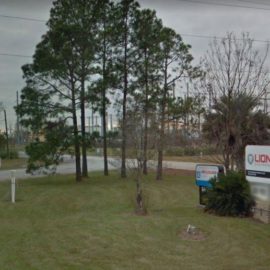
Ascension Parish is limiting growth for thousands of acres of land.
Ascension Parish government is proposing a sweeping limit on new housing for tens of thousands of acres of largely isolated, flood-prone land in the parish’s eastern border along the Amite and Blind rivers and the Amite River Diversion Canal. Parish officials say the massive zoning change would prevent intensive development and the extensive use of dirt fill, avoiding increased flooding risk and improving the parish’s chances to cut flood insurance rates. Stretching from the Galvez area near Port Vincent to Ascension’s southeastern tip near Lake Maurepas and St. James Parish, the estimated 33,200 acres is mostly swamp and marsh in the parish’s coastal zone, plans show. Outside the parish’s existing or planned levee systems, the area is home to a collection of camps, large-tract hunting and timber properties, the parish’s major drainage pumping station, and a small portion of the Maurepas Swamp Wildlife Management Area. The zone narrowly avoids a salt dome storage operation north of Airline Highway and east of Sorrento, plans show. With fill limits that are also planned and the high flood risk in the area, new houses in the low-density zone would most likely have to be built on piers with what parish officials described as small amounts of dirt fill for driveways and protection of the base of the piers. “The whole idea is to leave a corridor for water to flow, you know, much like it couldn’t do after the 2016 flood,” said Jerome Fournier, parish planning director.
nola.com
The parish zoning commission is on board
The proposal, along with new reviews for apartment complexes, received the blessing of the parish Zoning Commission earlier this week in Gonzales. The commission went away from an earlier proposed name for the zone, “Countryside,” and called for more review of fill limits. Both proposals are expected before the full Parish Council next month, officials said. The proposed zoning changes would dovetail with a flood control plan aimed at encouraging the overland flow of high water in lower Ascension that is now blocked by the earthen berms on which state highways sit. Known at the La. 22 gapping project, that plan would build a canal under La. 22 near the Diversion Canal in the Acy area, partly where the rezoning is planned. In 2021, parish officials were awarded $42 million from Gov. John Bel Edwards’ post-2016 flood Louisiana Watershed Initiative to build the La. 22 canal in conjunction with a locally financed extension of the parish’s eastern flood barrier, the Laurel Ridge Levee. The parish’s zoning proposal also comes as an outgrowth of continued post-’16 flood worries that triggered a nearly yearlong growth moratorium in 2021 and 2022 and new tough rules to limit the impact of development. This latest growth limitation is an idea the parish’s development consultant, Kendig Keast, had put forward. The parish recently paused its contract with the Texas-based firm to give developers a chance to adjust to the new changes. Builders have said the rules are costly and are pushing up home prices.
The area is in the most restrictive zoning – conservation.
The 33,200 acres are already under Ascension’s most restrictive zoning category, known as Conservation, which limits construction to one single-family home per acre. Dubbed “Conservation 5,” the new zoning category would be five times more restrictive, limiting single-family homes to one unit for every five acres, parish plans say. Hundreds of existing homes and lots — of well less than an acre — that have been built along the Diversion Canal, Blind River, Lake Martin and other waterways would not be affected, officials said. Many of those homes, some of which are sizable and expensive, have been built on slabs on earthen spoil banks. The rules would also grandfather properties elsewhere that are already less than five acres and would not bar use of a special parish rule to create half-acre lots for family heirs, officials said. The changes also come as the National Flood Insurance Program has rolled out its Risk Rating 2.0 program, which promises to drive up flood insurance costs for south Louisiana with more actuarially sound rates. The areas affected by the new Ascension zoning category and those on its fringes are expected to see flood insurance rates rise between 54% and 98% over the next several years to $1,640 to $1,850 per year, a federal database of new estimates says. Fournier, the Ascension official, explained that the proposed zoning change would give Ascension points in the Federal Emergency Management Agency’s Community Rating System and help lower flood insurance rates. “We’re at a Level 7 and, like golf, the low score wins. So, we’re trying to get to a 6, and this will help us get to the 6, we’re hoping,” he said.
The question is what does it do to the price of the land.
This kind of reduction in development potential also arguably reduces land’s economic value, but reaction to the still-developing plan has been muted. No one from the public spoke Wednesday to the Zoning Commission about the proposal, which would affect nearly 18% of the parish’s land mass, according to census data. Attempts to reach several landowners in the region, some individuals and some private corporations, were unsuccessful on Thursday. Ascension Parish Councilman Chase Melancon, a St. Amant native who represents big pieces of the area, declined to comment Friday until he could study the idea more closely. State wildlife and fisheries officials noted the zoning rules don’t apply to the Maurepas Swamp wildlife area, but they welcomed the changes to surrounding properties. “From a wildlife conservation standpoint, there is a potential this could be beneficial. Less development means more habitat for wildlife,” said Randy Myers, assistant secretary for the state Office of Wildlife.
Since 2016 there have been calls to limit development in low lying areas.
Since the August 2016 flood, some environmental groups have advocated against continued building in low-lying areas. They have been tracking new developments that do so in East Baton Rouge Parish. Margie Vicknair-Pray, a staffer with the Delta Chapter of the Sierra Club, said the Baton Rouge-area group “is in full support of these changes” that are “needed amid a changing environment and climate and are in the best interests of the people and the land for future generations. We need stronger zoning plans.” “While no development is best near wetlands, this is a step in the right direction,” she added. The zone would also encompass about 1,484 acres of hunting land in which Ascension Parish President Clint Cointment has had ownership interests through heirship and on his own. The tracts are held in the Big Casino Financial and Sweet Water Hunting Club of Ascension companies, land records show. When asked on Thursday, Cointment said the zoning change would not pose a conflict for him because the move, by reducing density, would devalue the land. “So, there’s no benefit to me whatsoever in going to a more restrictive zoning,” he said. He said that the concept was one of Kendig Keast’s proposals and not one he put forward, adding, as Fournier noted, that the benefit comes in the potential reduction for parishwide flood insurance rates.
These are necessary steps if you want to limit flooding homes.


